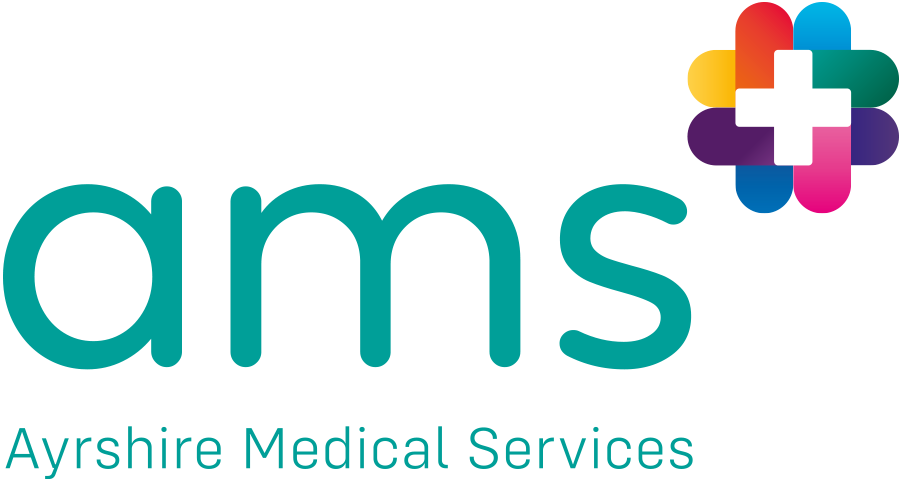Occupational Illnesses
Seek Help Today
We know how difficult it can be when you suddenly become ill. If it is a workplace illness then this adds to more stress and the thought that if you seek help, you may lose your job or be looked upon differently.
We are experts in the field of Occupational Health and provide information and treatment for various Occupational Illnesses.
What is an Occupational Illness?
In simple terms it is a chronic condition which is brought on by continued exposure and is typically over a long period of time. These activities are usually identified as workplace activities or workplace hazards. In 2018/19 over 1.4 million people reported new or long-standing occupational illnesses.
The nature of occupational illnesses is such that they can go undetected for a long time which makes the connection between cause and effect not immediately obvious. Often by the time someone has noticed an issue, they may require extensive treatment, or the damage could be permanent. Our Specialists at AMS carry out a wide range of health surveillance to ensure you as an employee and your employer is doing everything they can to limit your exposure.

Noise-Induced Hearing Loss
Noise-induced hearing loss (NIHL) is permanent and irreversible. In the UK alone around 3% of compensation claims are directly related to NIHL.
The Health and Safety Executive estimate around 2 million people exposed to dangerous levels of noise at work. Did you know that NIHL accounts for the second highest percentage of occupational health insurance claims: 75%?
Symptoms / Cause / Prevention
What are the Symptoms?
Struggling to hear people talking who are just a few feet away from you. Other symptoms include a feeling of ‘fullness’ in the ears after exiting a noisy area. Other individuals may suffer from tinnitus which is a constant or intermittent ringing in your ears.
What is the Cause?
Sounds which exceed 85 decibels resulting in prolonged exposure will cause permanent hearing loss. Remember even working with hand tools which can emit exposures as high as 95 decibels can cause damage and this is why it is essential that PPE is worn at all times and that ear defenders or plugs are fitted properly and the seal works to an adequate level.
How Do I Prevent It?
NIHL like many other occupational health exposures comes on gradually. Sadly, it is difficult to catch it before the damage is done. But what can you do to help yourself?
Ensure your company has a robust hearing surveillance programme
Wear appropriately fitted hearing protection.
Follow all appropriate measures and controls your company has put in place to protect your hearing.
Stress & Mental Ill Health
We understand how difficult workplace stress can be and the impact on both your mental and physical health. When demand exceeds capabilities, people often become overwhelmed to the point where they feel unable to cope resulting in a decline in mental health.
We can carry out workplace assessments and deliver workshops to be meet your needs.
Symptoms & Triggers
How do I know if I am suffering from work related stress?
This is a question we are often asked and there are a number of identifiable triggers that will help you to work out if you are doing too much, feeling overwhelmed or just need to stop and take stock of your life.
Remember Chronic Stress not only affects your work and overall health, it can also lead to depression. Depression is a much harder cycle to break and can lead to both physical and mental changes in you.
What are the Symptoms & Triggers?
- Agitation, moodiness, or negative feelings at work.
- Apathy and a lack of motivation
- Chest pain and tightness including panic attacks.
- Feeling sick or having a feeling of dread for work.
- Skin problems including stress eczema
- Struggling to concentrate
- Tiredness and feeling sluggish all or some of the time.
If you are experiencing any of these symptoms then you should firstly speak to your line manager who should arrange for you to have an occupational health assessment to determine any measures or assistance that requires to be put in place to help you cope and adjust at work.
Occupational Lung Disease
Occupational lung disease is any lung condition you get at work. These include coal workers (black lung disease), asbestosis, silicosis and Farmers Lung also known as allergic alveolitis. Other conditions include occupational asthma, bronchitis, or emphysema. It occurs because of repeated exposure to certain toxins. You can even get a disease long after being exposed to those toxins.
Certain workplaces lend themselves to the disease and these include factories and plants with high amounts of toxins. These toxins can include asbestos, silica dust, smoke, fumes, gases, and other particles.
What are the symptoms of occupational lung disease?
Symptoms vary depending on your work setting. Smoking can worsen symptoms and that is why as health professionals we would always recommend you stop smoking or at least try to cut down.
Symptoms can be similar to those of a cold, the flu, or allergies. Other symptoms include
Shortness of Breath / Chest Pain / Chest Tightness
Breathing Problems / Muscle or body aches / Persistent nagging cough.
Causes & Prevention
What causes occupational lung disease?
Many workplace substances can cause occupational lung disease and it is therefore essential you are your company carry out regular risk assessment and also have a robust health surveillance in place.
However common causes include:
- Dust from things such as coal, asbestos, silica, talc, cereal, grains, drugs, and enzymes particles.
- Fumes from metals that are heated and cooled quickly. This process results in fine, solid particles being carried in the air. Job examples include welding, smelting, furnace work, pottery making, plastics manufacturing, and rubber operations.
- Smoke from burning materials. Smoke can contain a variety of particles, gases, and vapours. Firefighters are at an increased risk.
- Gases such as formaldehyde, ammonia, chlorine, and nitrogen oxides.
- Mists or sprays from paints, lacquers (such as varnish), hair spray, pesticides, cleaning products, acids, oils, and solvents (such as turpentine).
What can I do to prevent this condition?
Depending on your line of work, you might not be able to avoid occupational lung disease. You can try to limit exposure to reduce your risk of disease. Things you can do are:
- Stop smoking.
- Wear a mask.
- Increase ventilation in work area.
- Use a respirator. This is a device that covers your nose and mouth. It cleans the air before it enters your body. You should clean the respirator after each use.
- Know and follow workplace safety precautions and first-aid processes.
- Ensure you attend for regular health surveillance within your companies’ protocol
Occupational Dermatitis
Dermatitis is a wide-spread occupational disease. Two common forms of dermatitis, normally seen in the workplace, are allergic dermatitis and contact (irritant) dermatitis. There are many agents that can trigger a dermatological reaction and these reactions can take the form of rashes, hives, or itchiness.
Contact Dermatitis is the most common occupational condition and usually is a result of reactions to chemical solvents. Allergic dermatitis can be caused by substances such as pesticides or latex. Like many occupational health conditions, the condition may not manifest itself right away in some whereas others may develop irritation following immediate exposure.
Contact dermatitis can often be distinguished from allergic dermatitis by its irregular skin configurations and by the fact that it is more likely to cause localized reactions such as itching and redness on the exposed skin. Contact dermatitis can be caused by a great number of substances including cleaning chemicals, nickel dust, adhesives, and epoxy resins.
Causes & Prevention
What causes Occupational Dermatitis?
Determining the specific causes can be difficult as many people have very sensitive skin. Where some chemical substances or materials can cause reactions, likewise, can food such as nuts, chocolate, or fish. Sometimes additives in food can also cause reactions. If in doubt, you should always seek medical advice to determine your exposure and what you need to do next.
What can I do to prevent this condition?
The most effective method of dealing with any type of dermatitis risk is through prevention.
The second line of defence against dermatitis is the correct use of PPE. Wearing gloves, looking after your skin, and using appropriate barrier creams and moisturisers – all essential elements of dealing with prevention.
If you do come into contact with an irritant, you should wash your hands immediately and use an antihistamine to reduce itch and inflammation. If symptoms worsen then seek medical advice.
Musculoskeletal Disorders
We appreciate the impact long hours, working at screens and manual handling has on our bodies. With MS being the number one occupational illness in the UK, we recognise the need to support staff to ensure that muscle and joint problems are kept to a minimum.
We have teamed up with our partners Cram Osteopaths to bring you the best possible advice and information. We carry out a wide range of ergonomic and workplace assessments to compliment your health and safety in house risk assessments.
Cram Osteopaths have been in business for over 70 years with a proven track record second to none. They specialist in occupational MSD and we are delighted to team up with them to offer our clients the benefit of both occupational health specialists and osteopathic treatment.
What is a Musculoskeletal Disorder (MSD)?
Musculoskeletal disorders do not come in any one form. They can be strains, sprains and areas that are overused causing a repetitive injury. Areas can include back issues, slipped discs and work-related upper limb disorders.
Symptoms, Causes & Prevention
What are the Symptoms?
Symptoms vary from person to person and depend on the affected area but might typically include:
- Pain
- Numbness
- Stiffness
- Swelling
- Tingling
What is the Cause?
The causes of common musculoskeletal problems are:
- Lifting heavy or awkward loads
- Repetitive activities such as packing and stacking
- Sitting in awkward positions for prolonged periods
What can you do to help the situation?
- Ensure you attend all manual handling courses.
- Do not put yourself at risk. Look at your workload and ask if yourself if it can be done differently. Is it a two-man job? Can I change my location or my layout?
- Ensure all necessary workplace risk and ergonomic assessments have been carried out.
- Report any injuries or adverse effects immediately and arrange for treatment of same.
We serve the full of the UK
Appointments are available at our offices in Ayrshire or we offer a UK wide service, visiting your premises. By using an onsite service. The loss of productivity in your organisation is minimised. By promoting health surveillance, morale in the workplace is increased and statistics have shown that sickness absence is reduced.

